Computational Fluid Dynamics Analysis of Spray Cooling in Australia
Abstract
:1. Introduction
2. Methodology
2.1. The Spray Cooling System
2.2. Spray and Turbulent Models
2.3. Boundary Conditions and Operating Parameters
3. Numerical Method and Settings
3.1. Computational Geometry and Grid Independence Test
3.2. Model Validation
3.3. Australian Ambient Conditions
4. Results and Discussion
4.1. The Effect of Spray Cooling
4.2. Psychometric Chart
4.3. Profiles
4.4. Contours
4.4.1. Temperature Contour
4.4.2. Mass Fraction Contour
4.4.3. Pressure Contour
4.4.4. Relative Humidity Contour
4.4.5. Velocity Contour
5. Conclusions
- -
- It is clear that effective enhancement of cooling is achievable, as demonstrated by the temperature at the outlet being lower than the temperature at the inlet for all cities in hot weather, especially in summer, and particularly for Perth and Adelaide. In cold weather, especially in winter, the temperature barely changes for all cities, but it mainly affects three cities: Melbourne, Adelaide, and Perth.
- -
- For humidity, spray cooling influences the relative humidity pattern, especially the area close to spray injection. The relative humidity generally increases by approximately 30% (absolute) throughout the year for all cities. However, because of its high winter temperature, the relative humidity significantly changes in Darwin in winter, from just under 40% to almost 90%.
- -
- The pressure and velocity demonstrate the same patterns for all cities. The pressure is higher at the spray injection area. The flow and pressure are independent of season and location, because of air’s thermophysical properties, which are identical, and having only a one-way coupling between the fluid and particles. In other words, there is no dependence on temperature and the particles have no influence on the fluid flow.
Author Contributions
Funding
Data Availability Statement
Conflicts of Interest
Nomenclature
| Mass or thermal Spalding number (-) | Velocity (m s−1) | ||
| Drag coefficient (-) | Humidity ratio (kgvapour/kgdry air) | ||
| Heat capacity (J kg−1 K−1) | Particle position (m) | ||
| Diffusion coefficient (m2 s−1) | Particle position as vector (-) | ||
| Droplet diameter (m) | Absolute humidity (gwater/kgair) | ||
| Gravitational acceleration (m s−2) | Thermal conductivity (W m−1 K−1) | ||
| Lewis number (-) | Viscosity (kg m−1 s−1) | ||
| Latent heat of vaporisation (J kg−1) | Density (kg m−3) | ||
| Mass (kg) | |||
| Vaporisation rate (kg s−1) | |||
| Nusselt number (-) | Subscripts | ||
| Prandtl number (-) | Continuous phase property | ||
| Particle Reynolds number (-) | Mixture property | ||
| Schmidt number (-) | Particle or droplet property | ||
| Sherwood number (-) | Relative property | ||
| Time (s) | Saturation | ||
| Temperature (K) | Water vapor property | ||
References
- Zhang, Z.; Li, J.; Jiang, P.-X. Experimental investigation of spray cooling on flat and enhanced surfaces. Appl. Therm. Eng. 2013, 51, 102–111. [Google Scholar] [CrossRef]
- Cheng, W.-L.; Zhang, W.-W.; Shao, S.-D.; Jiang, L.-J.; Hong, D.-L. Effects of inclination angle on plug-chip spray cooling in integrated enclosure. Appl. Therm. Eng. 2015, 91, 202–209. [Google Scholar] [CrossRef]
- Sajjad, U.; Abbas, M.; Hamid, K.; Abbas, S.; Hussain, I.; Ammar, S.M.; Sultan, M.; Ali, H.M.; Hussain, M.; Rehman, T.; et al. A review of recent advances in indirect evaporative cooling technology. Int. Commun. Heat Mass Transf. 2021, 122, 105140. [Google Scholar] [CrossRef]
- Costelloe, B.; Finn, D. Indirect evaporative cooling potential in air–water systems in temperate climates. Energy Build. 2003, 35, 573–591. [Google Scholar] [CrossRef] [Green Version]
- Kim, J. Spray cooling heat transfer: The state of the art. Int. J. Heat Fluid Flow 2007, 28, 753–767. [Google Scholar] [CrossRef]
- Tissot, J.; Boulet, P.; Trinquet, F.; Fournaison, L.; Lejeune, M.; Liaudet, F. Improved energy performance of a refrigerating machine using water spray upstream of the condenser. Int. J. Refrig. 2014, 38, 93–105. [Google Scholar] [CrossRef]
- Jones, S.D.M.; Robertson, W.M. The effects of spray-chilling carcasses on the shrinkage and quality of beef. Meat Sci. 1988, 24, 177–188. [Google Scholar] [CrossRef] [PubMed]
- Hynry, F.; Bennett, A. Hydraircooling vegetable products in unit loads. Trans. ASAE 1973, 16, 731–733. [Google Scholar] [CrossRef]
- Létang, G.; Moureh, J. Application de la brumisation dans les meubles de vente pour denrées alimentaires fraîches. Rev. Gén. Froid. 2005, 1057, 51–66. [Google Scholar]
- Naticchia, B.; D’Orazio, M.; Carbonari, A.; Persico, I. Energy performance evaluation of a novel evaporative cooling technique. Energy Build. 2010, 42, 1926–1938. [Google Scholar] [CrossRef]
- Pearlmutter, D.; Erell, E.; Etzion, Y.; Meir, I.; Di, H. Refining the use of evaporation in an experimental down-draft cool tower. Energy Build. 1996, 23, 191–197. [Google Scholar] [CrossRef]
- Wang, J.-X.; Li, Y.-Z.; Yu, X.-K.; Li, G.-C.; Ji, X.-Y. Investigation of heat transfer mechanism of low environmental pressure large-space spray cooling for near-space flight systems. Int. J. Heat Mass Transf. 2018, 119, 496–507. [Google Scholar] [CrossRef]
- Hou, Y.; Tao, Y.; Huai, X.; Guo, Z. Numerical characterization of multi-zone spray cooling. Appl. Therm. Eng. 2012, 39, 163–170. [Google Scholar] [CrossRef]
- Al-Waked, R.; Behnia, M. CFD simulation of wet cooling towers. Appl. Therm. Eng. 2006, 26, 382–395. [Google Scholar] [CrossRef]
- Kim, K.; Yoon, J.-Y.; Kwon, H.-J.; Han, J.-H.; Son, J.E.; Nam, S.-W.; Giacomelli, G.A.; Lee, I.-B. 3-D CFD analysis of relative humidity distribution in greenhouse with a fog cooling system and refrigerative dehumidifiers. Biosyst. Eng. 2008, 100, 245–255. [Google Scholar] [CrossRef]
- Somasundaram, S.; Tay, A.A.O. A study of intermittent liquid nitrogen sprays. Appl. Therm. Eng. 2014, 69, 199–207. [Google Scholar] [CrossRef]
- Liu, X.; Xue, R.; Ruan, Y.; Chen, L.; Zhang, X.; Hou, Y. Flow characteristics of liquid nitrogen through solid-cone pressure swirl nozzles. Appl. Therm. Eng. 2017, 110, 290–297. [Google Scholar] [CrossRef]
- Liu, X.; Xue, R.; Ruan, Y.; Chen, L.; Zhang, X.; Hou, Y. Effects of injection pressure difference on droplet size distribution and spray cone angle in spray cooling of liquid nitrogen. Cryogenics 2017, 83, 57–63. [Google Scholar] [CrossRef]
- Xue, R.; Ruan, Y.; Liu, X.; Chen, L.; Zhang, X.; Hou, Y.; Chen, S. Experimental study of liquid nitrogen spray characteristics in atmospheric environment. Appl. Therm. Eng. 2018, 142, 717–722. [Google Scholar] [CrossRef]
- Montazeri, H.; Blocken, B.; Hensen, J.L.M. CFD analysis of the impact of physical parameters on evaporative cooling by a mist spray system. Appl. Therm. Eng. 2015, 75, 608–622. [Google Scholar] [CrossRef] [Green Version]
- Sureshkumar, R.; Kale, S.R.; Dhar, P.L. Heat and mass transfer processes between a water spray and ambient air—I. Experimental data. Appl. Therm. Eng. 2008, 28, 349–360. [Google Scholar] [CrossRef]
- Zhang, W.; Cheng, W.; Shao, S.; Jiang, L.; Hong, D. Integrated thermal control and system assessment in plug-chip spray cooling enclosure. Appl. Therm. Eng. 2016, 108, 104–114. [Google Scholar] [CrossRef]
- Ho Song, C.; Lee, D.; Tack Ro, S. Cooling enhancement in an air-cooled finned heat exchanger by thin water film evaporation. Int. J. Heat Mass Transf. 2003, 46, 1241–1249. [Google Scholar] [CrossRef]
- Tissot, J.; Boulet, P.; Trinquet, F.; Fournaison, L.; Macchi-Tejeda, H. Air cooling by evaporating droplets in the upward flow of a condenser. Int. J. Therm. Sci. 2011, 50, 2122–2131. [Google Scholar] [CrossRef]
- Montazeri, H.; Blocken, B.; Hensen, J. Evaporative cooling by water spray systems: CFD simulation, experimental validation and sensitivity analysis. Build. Environ. 2015, 83, 129–141. [Google Scholar] [CrossRef]
- Xia, L.; Gurgenci, H.; Liu, D.; Guan, Z.; Zhou, L.; Wang, P. CFD analysis of pre-cooling water spray system in natural draft dry cooling towers. Appl. Therm. Eng. 2016, 105, 1051–1060. [Google Scholar] [CrossRef] [Green Version]
- Kabeel, A.D.; EI-Samadony, Y.A.F.; Khiera, M.H. Performance evaluation of energy efficient evaporatively air-cooled chiller. Appl. Therm. Eng. 2017, 122, 204–213. [Google Scholar] [CrossRef]
- Yang, H.; Rong, L.; Liu, X.; Liu, L.; Fan, M.; Pei, N. Experimental research on spray evaporative cooling system applied to air-cooled chiller condenser. Energy Rep. 2020, 6, 906–913. [Google Scholar] [CrossRef]
- Abramzon, B.; Sirignano, W.A. Droplet vaporisation model for spray combustion calculations. Int. J. Heat Mass Transf. 1989, 32, 1605–1618. [Google Scholar] [CrossRef]
- Faeth, G.M. Current status of droplet and liquid combustion. Prog. Energy Combust. Sci. 1977, 3, 499–539. [Google Scholar] [CrossRef]
- Xiong, M.; Chen, B.; Zhang, H.; Qian, Y. Study on accuracy of CFD simulation of wind environment around high-rise building: A comparative study of k-ε turbulence models based on polyhedral meshes and wind tunnel experiments. Appl. Sci. 2022, 12, 7105. [Google Scholar] [CrossRef]
- Larpruenrudee, P.; Bennett, N.S.; Gu, Y.T.; Fitch, R.; Islam, M.S. Design optimization of a magnesium-based metal hydride hydrogen energy storage system. Sci. Rep. 2022, 12, 13436. [Google Scholar] [CrossRef] [PubMed]
- Online Interactive Psychrometric Chart. FlyCarpet INC. Available online: http://www.flycarpet.net/en/psyonline (accessed on 27 June 2021).
- Geoscience Australia. Climatic Extreme. 2021. Available online: https://www.ga.gov.au/scientific-topics/national-location-information/dimensions/climatic-extremes (accessed on 24 June 2021).
- Bureau of Meteorology. Climate Statistics for Australian Locations. 2021. Available online: http://www.bom.gov.au/climate/averages/tables/cw_066062.shtml (accessed on 24 June 2021).
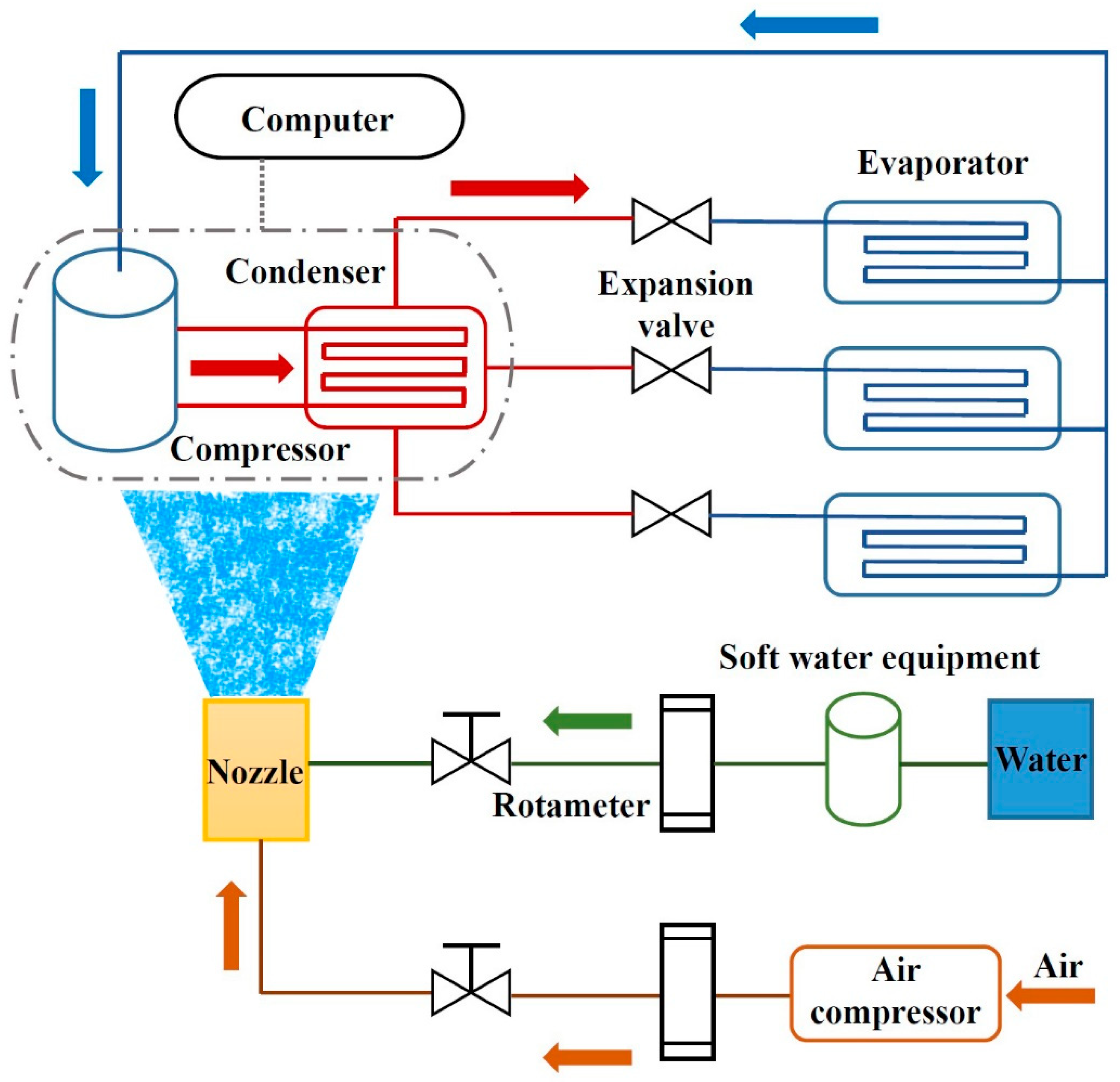


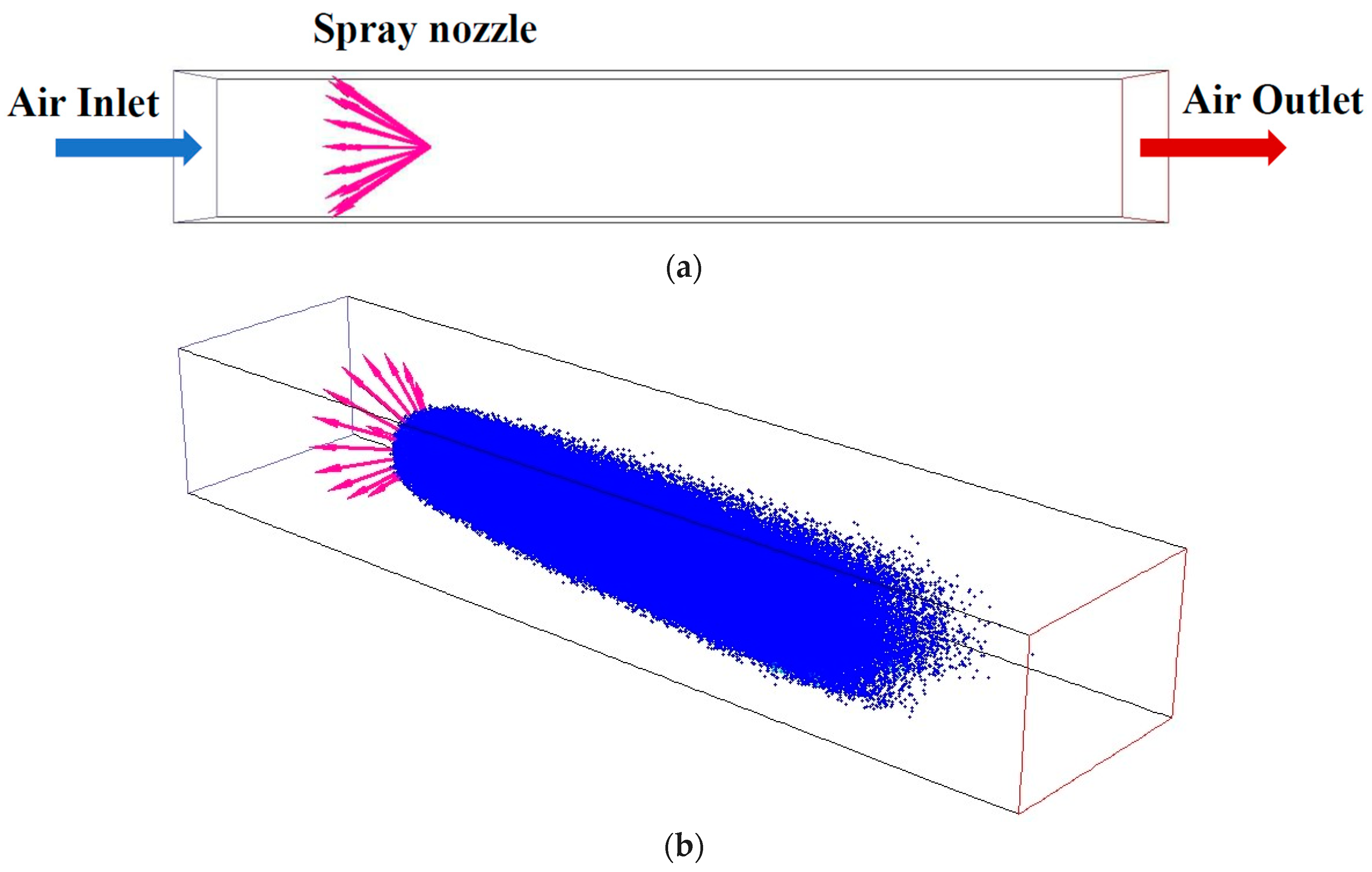


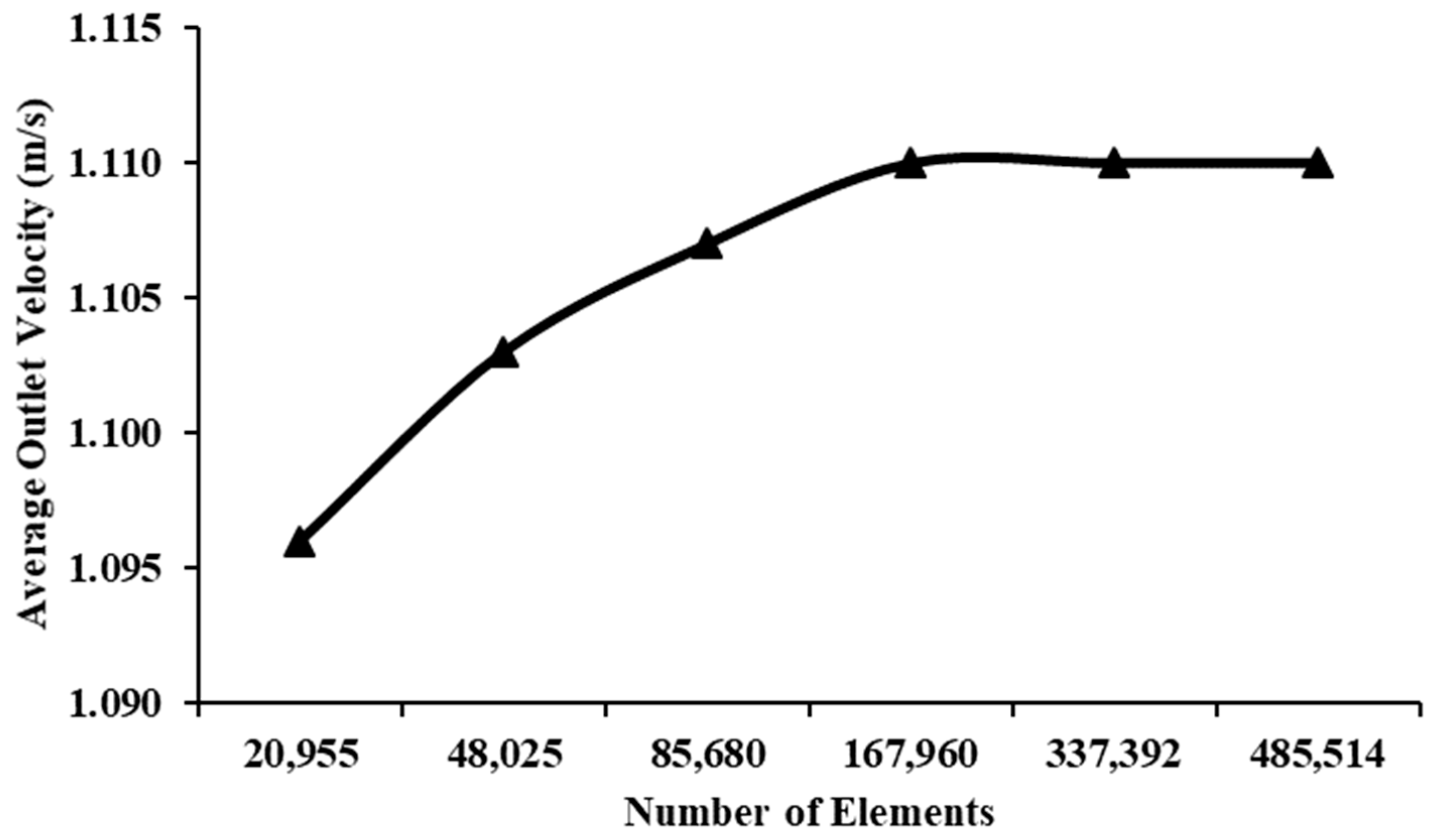
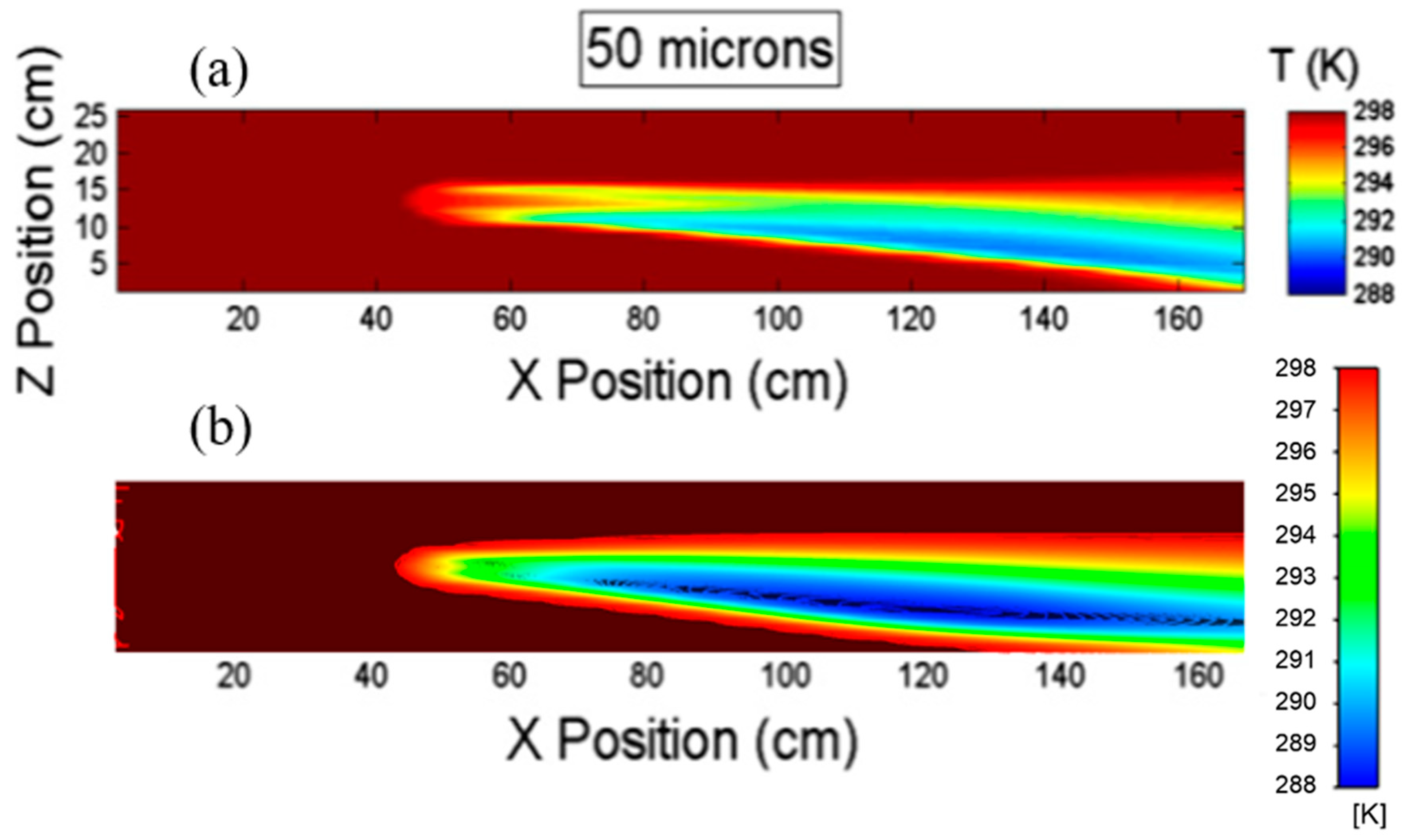




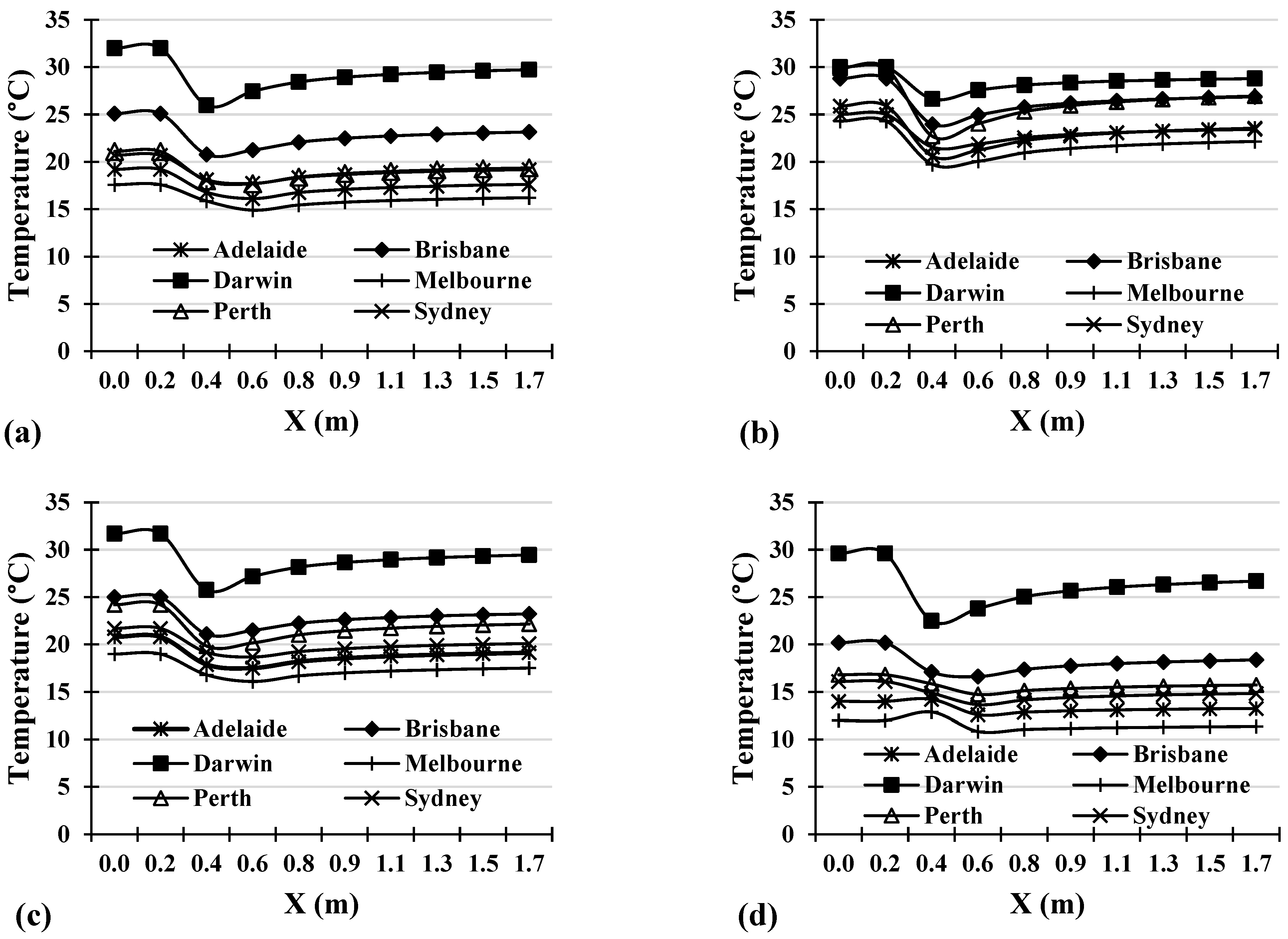



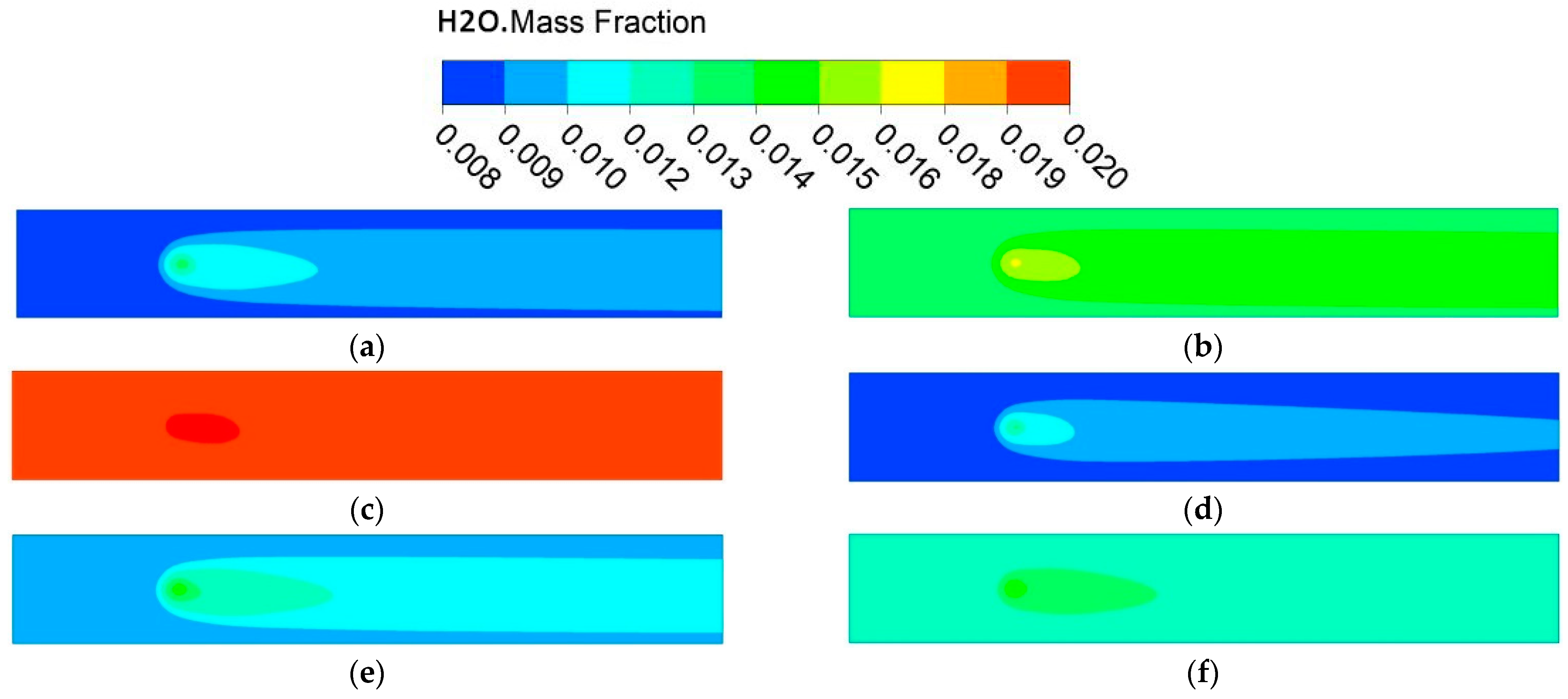

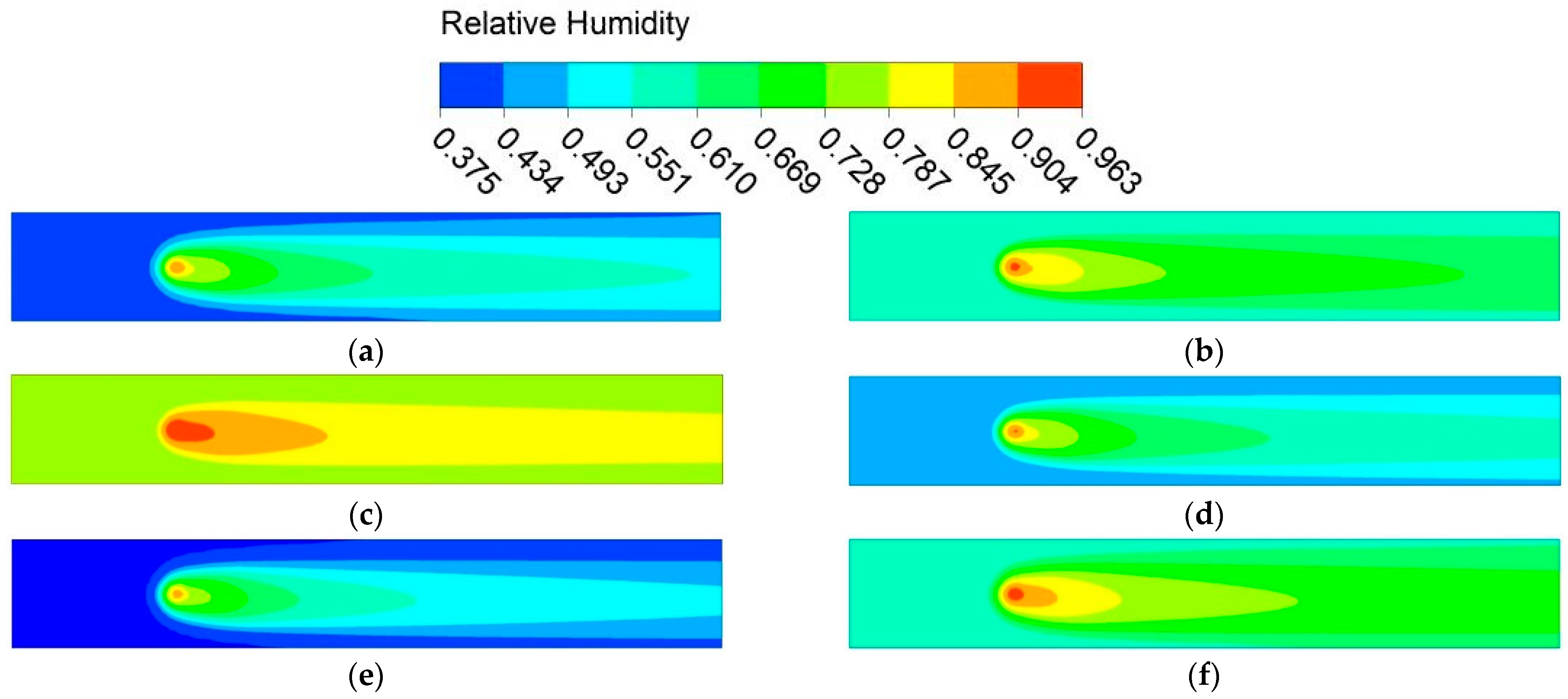

| Australian Temperature at 3 pm (°C) | |||||||||||||
|---|---|---|---|---|---|---|---|---|---|---|---|---|---|
| Location | City | Jan | Feb | Mar | Apr | May | Jun | Jul | Aug | Sep | Oct | Nov | Dec |
| SA | Adelaide | 25.9 | 26.3 | 23.9 | 20.8 | 17.5 | 15.0 | 14.0 | 14.8 | 16.7 | 19.2 | 21.9 | 23.6 |
| QLD | Brisbane | 28.8 | 28.2 | 27.1 | 25.0 | 22.8 | 20.5 | 20.2 | 21.4 | 23.6 | 25.1 | 26.4 | 27.8 |
| NT | Darwin | 30.2 | 30.0 | 30.5 | 31.7 | 31.2 | 29.9 | 29.6 | 30.2 | 31.2 | 32.0 | 31.9 | 31.2 |
| VIC | Melbourne | 24.3 | 24.8 | 22.5 | 19.0 | 15.6 | 12.6 | 12.0 | 13.2 | 15.2 | 17.6 | 20.2 | 22.4 |
| WA | Perth | 29.9 | 30.2 | 28.1 | 24.2 | 20.6 | 17.8 | 16.8 | 17.3 | 18.8 | 21.1 | 24.2 | 27.1 |
| NSW | Sydney | 24.8 | 24.8 | 23.9 | 21.7 | 19.0 | 16.6 | 16.1 | 17.2 | 19.0 | 20.7 | 22.1 | 23.9 |
| Australian Humidity at 3 pm (%) | |||||||||||||
| Location | City | Jan | Feb | Mar | Apr | May | Jun | Jul | Aug | Sep | Oct | Nov | Dec |
| SA | Adelaide | 42 | 42 | 46 | 50 | 58 | 64 | 65 | 61 | 56 | 50 | 46 | 45 |
| QLD | Brisbane | 55 | 58 | 56 | 54 | 53 | 51 | 45 | 43 | 45 | 50 | 53 | 54 |
| NT | Darwin | 70 | 72 | 67 | 52 | 43 | 38 | 37 | 40 | 47 | 52 | 58 | 65 |
| VIC | Melbourne | 44 | 44 | 47 | 52 | 60 | 67 | 65 | 59 | 56 | 52 | 49 | 45 |
| WA | Perth | 37 | 37 | 39 | 46 | 53 | 60 | 60 | 56 | 54 | 49 | 44 | 41 |
| NSW | Sydney | 60 | 63 | 61 | 59 | 58 | 57 | 52 | 49 | 51 | 54 | 56 | 58 |
Disclaimer/Publisher’s Note: The statements, opinions and data contained in all publications are solely those of the individual author(s) and contributor(s) and not of MDPI and/or the editor(s). MDPI and/or the editor(s) disclaim responsibility for any injury to people or property resulting from any ideas, methods, instructions or products referred to in the content. |
© 2023 by the authors. Licensee MDPI, Basel, Switzerland. This article is an open access article distributed under the terms and conditions of the Creative Commons Attribution (CC BY) license (https://creativecommons.org/licenses/by/4.0/).
Share and Cite
Larpruenrudee, P.; Do, D.K.; Bennett, N.S.; Saha, S.C.; Ghalambaz, M.; Islam, M.S. Computational Fluid Dynamics Analysis of Spray Cooling in Australia. Energies 2023, 16, 5317. https://doi.org/10.3390/en16145317
Larpruenrudee P, Do DK, Bennett NS, Saha SC, Ghalambaz M, Islam MS. Computational Fluid Dynamics Analysis of Spray Cooling in Australia. Energies. 2023; 16(14):5317. https://doi.org/10.3390/en16145317
Chicago/Turabian StyleLarpruenrudee, Puchanee, Doan Khai Do, Nick S. Bennett, Suvash C. Saha, Mohammad Ghalambaz, and Mohammad S. Islam. 2023. "Computational Fluid Dynamics Analysis of Spray Cooling in Australia" Energies 16, no. 14: 5317. https://doi.org/10.3390/en16145317






